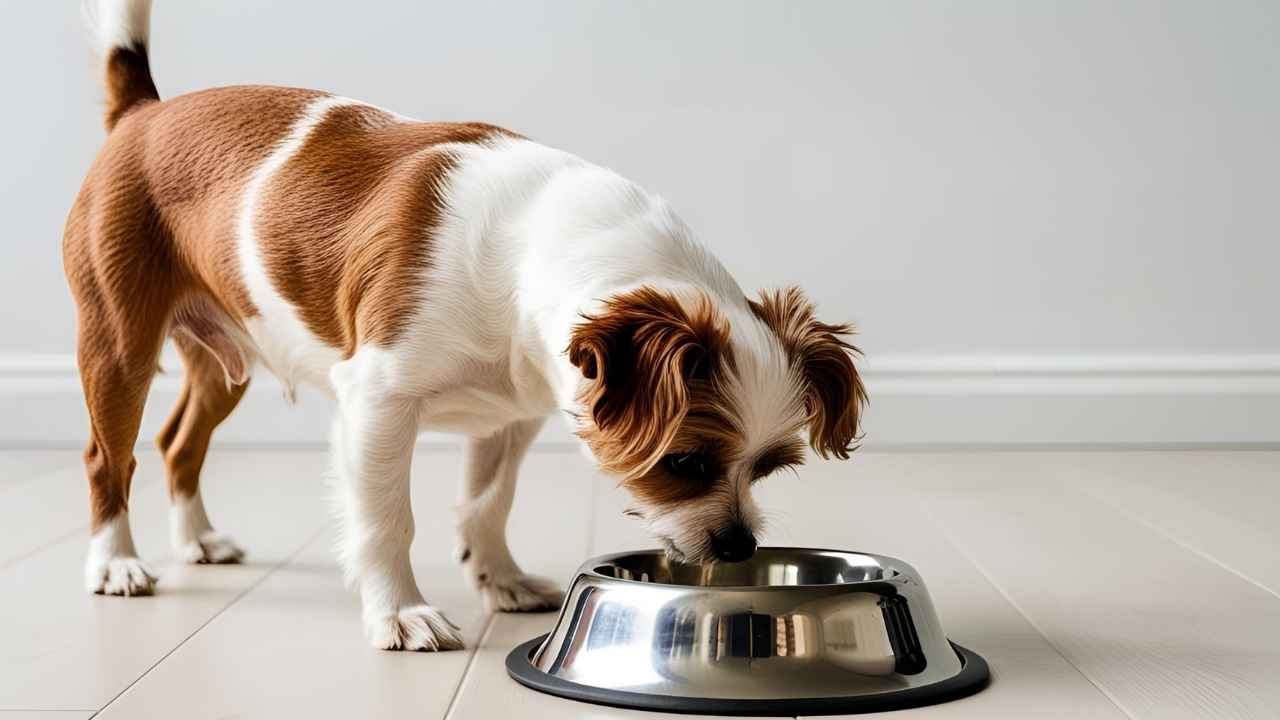Today, more pet owners are thinking about the impact their choices have on the planet—and their wallets. Feeding a dog well no longer just means buying any bag of dog food. People want options that support dog health, cost less, and have a lower environmental impact. This growing interest in sustainable and cost-effective pet care is changing how we shop and feed our pets.
The right diet is very important for a dog’s overall health. Good food supports healthy skin and coat, a strong immune system, and proper digestion. A poor diet can lead to problems like vomiting, diarrhoea, and even more serious conditions such as pancreatitis or metabolic bone disease. Eco-Friendly Dog Feeding. Feeding the right portion size also helps maintain a healthy weight and prevents obesity, which can lead to other health problems.
Veterinarians, veterinary nurses, and certified canine nutrition consultants all agree on one thing: feeding your dog a nutritionally balanced diet is key. These experts share their insights to help pet owners make better choices. Whether you’re thinking of switching to gently cooked meals, plant-based dog food, or simply want to choose better kibble, this guide will help you understand your options.
A Complete Diet
What Does a ‘Complete’ Diet Mean?
A complete diet provides all the nutrients a dog needs for their age, size, and lifestyle. These nutrients include proteins, fats, carbohydrates, vitamins, and minerals. A proper balance helps support healthy bones, muscles, skin, and organs. If a dog does not get enough nutrients, they can suffer from dietary deficiencies, which may cause serious health issues like metabolic bone disease.
Complete dog food is different from complementary food. Complementary foods don’t provide all the nutrients on their own. They are usually treats or mixers and should not replace meals.
Vet Recommendations
Many practising vets and veterinary nutritionists recommend choosing food that meets standards set by groups like the British Veterinary Association (BVA), AAFCO, or FEDIAF. These foods have been tested to ensure they meet a dog’s nutritional needs.
There are many choices available—from ultra-processed kibble to fresh whole foods and lightly cooked or gently cooked meals. While some pet owners prefer homemade dog food or raw dog foods, these need careful planning to make sure they are balanced. Improper home diets can lead to serious issues if key nutrients are missing or if unsafe ingredients like onion family foods or xylitol are used, which can be toxic or even fatal.
A nutritionally balanced diet from a specialist pet food supplier is often safer and more convenient.
Cost-Conscious Strategies
Feeding your dog a healthy diet doesn’t have to be expensive. There are many budget-friendly complete foods available, such as Wagg Meaty Goodness or Pets at Home Complete Nutrition. Buying in larger packs reduces the cost per kilo. You can also look for subscription services that offer discounts and regular deliveries.
When choosing between wet dog food and dry pet food (kibble), consider both nutrition and price. Kibble is often more affordable and easier to store. Wet food may be more appealing to picky eaters and helps with hydration, but it often costs more per portion. Brands like Butternut Box offer lightly cooked, higher-quality options that may suit those looking for a middle ground.
The ‘Natural’ Option
The Appeal of Natural Feeding
Many dog owners today are turning to more natural ways of feeding their pets. There is a growing interest in raw dog foods, homemade dog food, and lightly cooked or gently cooked meals. These options are often seen as healthier because they are less ultra-processed and closer to what dogs might eat in nature.
Pet food labels often include terms like “grain-free”, “human-grade”, or “organic”. These words appeal to people who want the best for their pets. Some owners believe these diets are better for dog health, especially for dogs with food sensitivities or skin problems.
Health Claims vs. Reality
While feeding fresh whole foods and unprocessed ingredients can be healthy, it’s important to understand the risks. Raw diets may carry bacteria and parasitic risks, such as salmonella or E. coli. These can harm both dogs and humans if food safety isn’t followed.
Feeding unbalanced meals can also lead to dietary deficiencies. Dogs need the right mix of nutrients for good health. Without it, they can develop serious problems like metabolic bone disease. Some dogs may even suffer from issues in their digestive tract, such as vomiting, diarrhoea, or even pancreatitis.
Expert Take
According to canine nutrition consultants, veterinary nutritionists, and the British Veterinary Association (BVA), natural feeding must be done with care. Dogs need a nutritionally balanced diet whether the food is raw, cooked, or commercial. They recommend working with a certified veterinary nutritionist if you want to prepare meals at home.
You can supplement homemade dog food with the help of specialist suppliers who offer vitamin and mineral mixes. This helps ensure your dog gets everything they need.
Affordability of Natural Diets
Natural diets can sometimes cost more than standard commercial food, especially when using premium brands. However, there are ways to make it more affordable. You can use meat scraps, leftovers (as long as they are safe), and seasonal produce to lower costs. Be careful not to include anything toxic like chocolate, xylitol, or items from the onion family, which can be fatal to dogs.
Compared to some wet dog food and kibble, cooking your own meals may cost more in time but not always in money—especially when planning meals around bulk purchases and what’s already in your kitchen.
Portion Size is Everything
Understanding Portion Control
Feeding the right portion size is just as important as choosing the right food. Many dogs today are overweight or obese because they are overfed. This can shorten their life and lead to diseases like diabetes and joint pain.
To avoid this, you need to consider your dog’s age, size, and activity level. A young, active dog will need more food than an older dog that spends most of the day resting.
Tools and Techniques
The best way to control portions is by weighing portions with a kitchen scale or using measuring cups. Feeding guidelines printed on the dog food packaging can be a good starting point. You can also monitor your dog’s body condition score (BCS) by checking how easy it is to feel their ribs and see their waistline.
Veterinary nurses and vets can help assess your dog’s ideal weight and guide you on proper calorie management.
Financial and Environmental Benefits
Feeding the correct portion helps you save money. You won’t go through dog food as quickly, which lowers your cost per kilo over time. It also means you reduce packaging waste and help limit your dog’s carbon footprint.
Giving too much food often leads to waste. Dogs may leave uneaten food, which then ends up in the bin. Smaller, more accurate meals reduce this waste and are better for the environment.
Being mindful of portion sizes also helps you better manage your dog’s calorific intake, supporting dog welfare and keeping them at a healthy weight.
The Eco Alternatives
Sustainable Pet Food Trends
Many pet owners are now looking for more sustainable ways to feed their dogs. One popular option is insect-based protein. It is an eco alternative that uses fewer resources compared to conventional livestock production. Brands like Wainwright’s Insects With Superfoods and Chick Bites offer alternative protein choices that are safe and provide good nutritional value.
Another growing trend is the plant-based diet for dogs. Products like Wilsons Vegan Premium Cold Pressed Dog Food and Hownd Plant Powered Superfood are examples. These are not only better for the environment but are also suitable for some dogs, especially when combined with the right supplements. While robust long-term data is still growing, early research shows that well-planned plant-based or hybrid diets can support dog health.
Some pet owners also look into lab-grown meat and cultivated meat options, which aim to lower the environmental impact while offering the meat content dogs enjoy.
Packaging and Sourcing
The type of packaging used in dog food matters too. Choosing brands that use recyclable, compostable, or reusable packaging helps reduce packaging waste. Some companies even use materials that break down naturally and cause less harm to the environment.
Look for pet food brands that focus on ethical sourcing and carbon neutrality. These companies care about both animal health and welfare and the planet. Reducing transport emissions and climate-heating emissions also plays a big part in lowering a product’s carbon footprint.
DIY Solutions
Making your own dog meals or dog treats at home is another eco-friendly option. You can use leftovers, clean meat scraps, and seasonal produce. This helps reduce food waste and gives you control over the ingredients.
Some owners also compost uneaten food, as long as it does not include unsafe or toxic items. This helps reduce the waste that ends up in landfills and improves your household’s overall sustainability.
Buying from local specialist suppliers can also reduce the environmental impact caused by shipping food over long distances.
Long-Term Impact
Feeding dogs in a more eco-friendly way helps reduce their carbon footprint over time. Your small choices—like selecting kibble with better kibble sustainability, or using homemade dog food recipes—can have a big long-term impact on the planet.
The key is to balance the dog’s nutritional needs with environmental goals. With so many eco alternatives available today, it’s easier than ever to find a feeding method that supports both dog welfare and the Earth. Even small changes, like switching to dry pet food in bulk with low-waste packaging or mixing in plant-based meals, can make a real difference.
You may also read: Can Dogs Eat Sauerkraut? A Complete Guide for Pet Parents
Are Greenies Good for Dogs? Benefits, Risks, and Safe Use Guide




